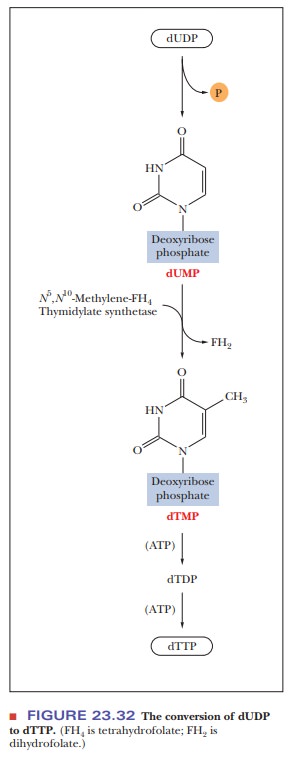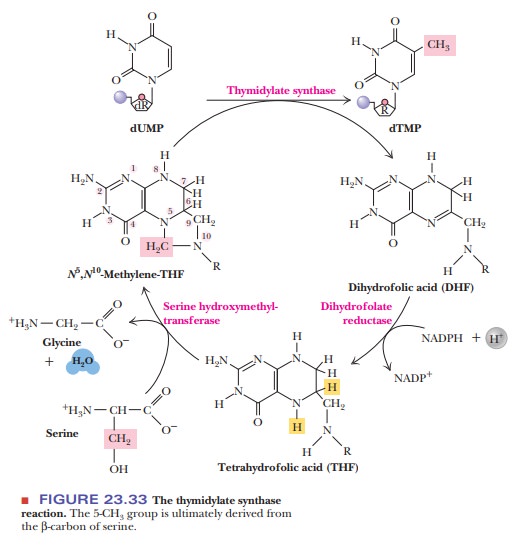Chapter: Biochemistry: The Metabolism of Nitrogen
Conversion of dUTP to dTTP
Conversion of dUTP to dTTP
A
one-carbon transfer is required for the conversion of uracil to thymine by
attachment of the methyl group. The most important reaction in this conversion
is that catalyzed by thymidylate synthase
(Figure 23.32). The source of the one-carbon unit is N5,N10-methylenetetrahydrofolate,
which is converted to dihydrofolate in the process. The metabolically active
form of the one-carbon carrier is tetrahydrofolate. Dihydrofolate must be
reduced to tetrahydrofolate for this series of reactions to continue, and this
process requires NADPH and dihydrofolate
reductase.

Since a supply of dTTP is necessary for DNA synthesis, inhibition of enzymes that catalyze the production of dTTP inhibits the growth of rapidly dividing cells. Cancer cells, like all fast-growing cells, depend on continued DNA syn-thesis for growth. Inhibitors of thymidylate synthetase, such as fluorouracil (see Question 50), and inhibitors of dihydrofolate reductase, such as aminop-terin and methotrexate (structural analogues of folate), have been used in cancer chemotherapy (Figure 23.33). The intent of such therapy is to inhibit the formation of dTTP and thus of DNA in cancer cells, causing the death of the cancer cells with minimal effect on normal cells, which grow more slowly. Chemotherapy has adverse side effects because of the highly toxic nature of most of the drugs involved; normal cells are affected to some extent, although less than the cancer cells. Enormous amounts of research are focused on find-ing safe and effective forms of treatment.

Summary
The addition of a methyl group to uracil to produce thymine
requires tet-rahydrofolate as the one-carbon carrier. This process is a target
for cancer chemotherapy.
Related Topics